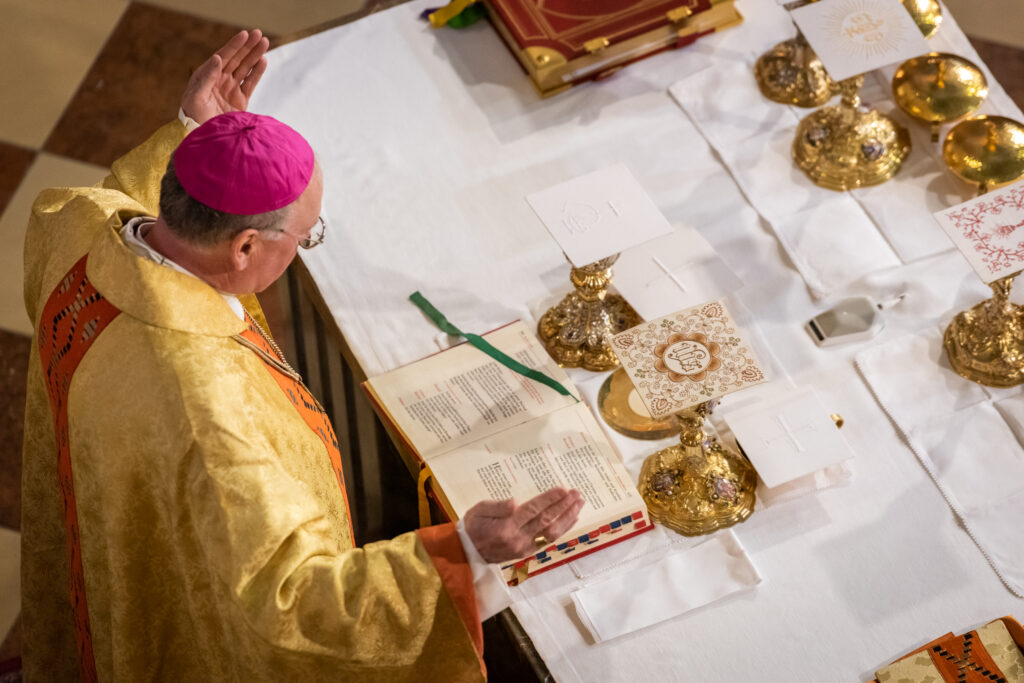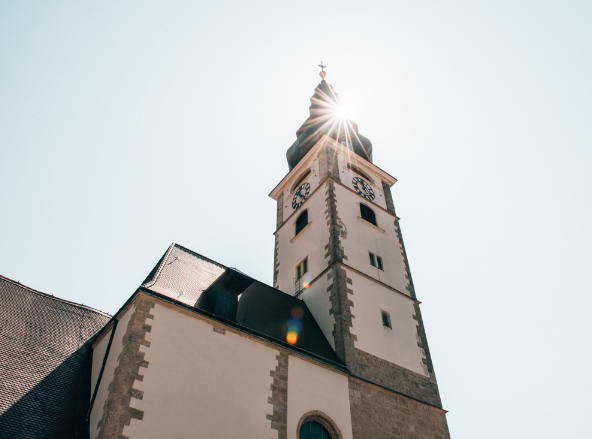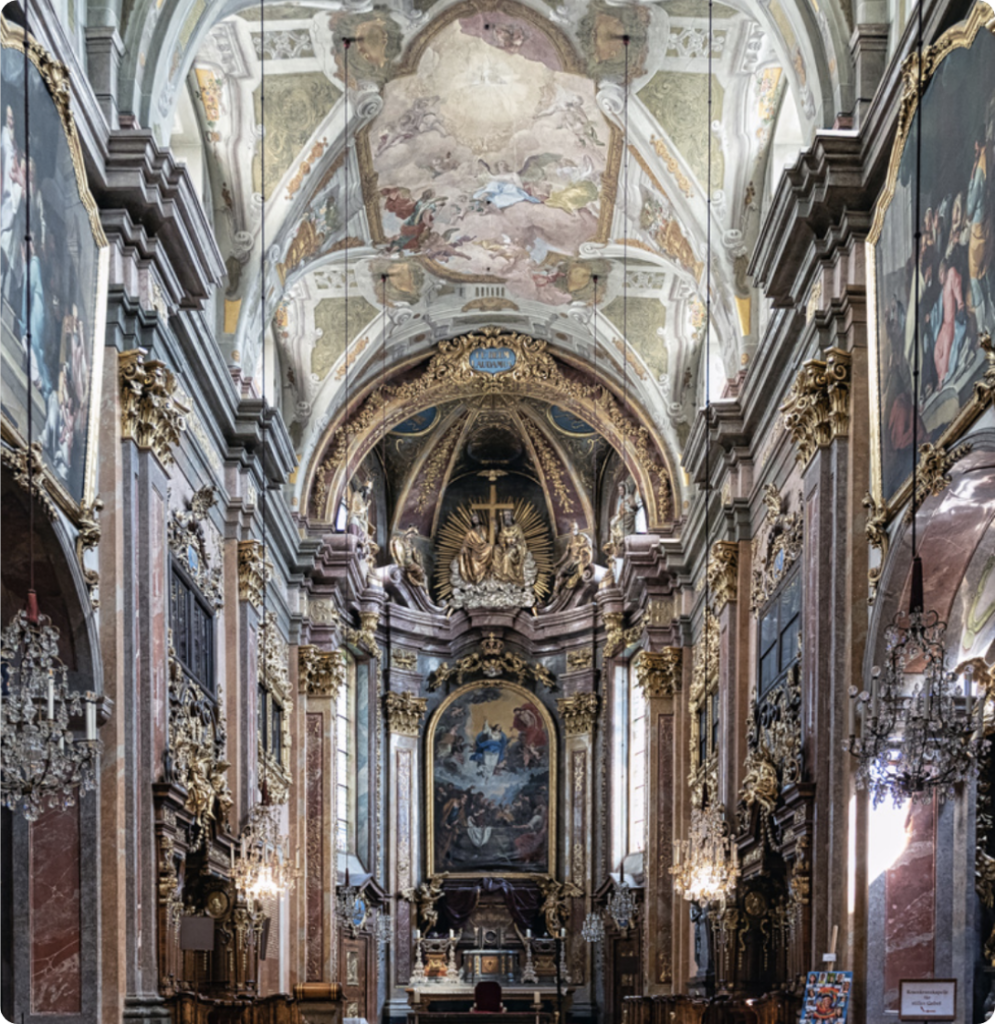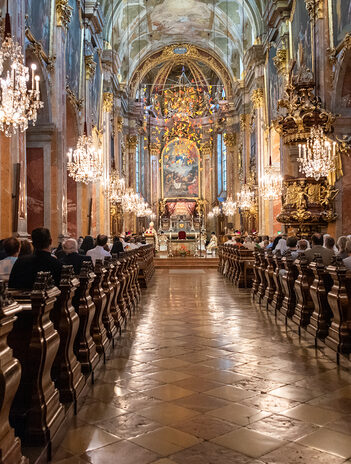
18.10.2024
St. Pölten Cathedral - important for pastoral care in the diocese of St. Pölten.
Pastoral care at St. Pölten Cathedral has a long and distinguished history dating back to 1785. With…
Read more




Donate for your cathedral in St.Pölten
The cathedral in St. Pölten is not only a landmark of the Lower Austrian capital and widely known for its baroque interior, but also a symbol of our history, culture and identity. In order to preserve its beauty and integrity, urgent renovation work is essential.
Why is a renovation necessary?
The cathedral's centuries-old splendour has suffered from the effects of time. From erosion caused by the weather to structural problems, the list of challenges is long. Without swift intervention, there is a risk of irreparable damage that could not only affect the cathedral's aesthetic beauty, but also jeopardise the safety of its visitors.
What is being done?
The general refurbishment of St. Pölten Cathedral is planned over a total of eight annual stages and includes the church itself as well as the so-called cloister, which is attached to the north side. The facades and the entire interior of the cathedral are also being considered, as well as the renewal of the electrics and lighting. One focus is also on creating barrier-free access on the south side of the cathedral. The first stage of restoration will begin in summer 2024. It includes the restoration of the cathedral apse in the east of the church.
Our call for support:
We are calling on all members of our community, as well as friends and supporters from around the world, to join us in this vital endeavour. Your donations are vital to fund the renovation work and ensure that the cathedral is preserved for generations to come.
The stages of restoration
The Romanesque apse is heavily weathered and shows considerable damage. After scaffolding, all stone parts are restored. The façade surfaces are given a full-surface lime-based protective slurry.
The cathedral tower and the west side facing the cathedral square need to be renovated. Stone parts are being restored, plasterwork added and all façade surfaces coloured.
In this construction phase, the largest phase of the overall project, the north and south façades of the nave are being restored. Damaged plasterwork will be replaced, the facades recoloured and various stonemasonry, locksmith, glazier and joinery work carried out. The approx. 1,000 m² roof area above the nave of the cathedral will be re-roofed with burnt tiles.
All facade, wall and vault surfaces in the cloister are to be repaired and painted, and stonemasonry work is required on the walls, wall coverings and epitaphs. The cloister courtyard will be accessed via two additional entrances to the garden.
The outdated electrical installation needs to be replaced and the lighting improved. Modern media technology will also be installed.
All wall and vault surfaces are being restored, for which a scaffold approximately 18 metres high is being erected. The furnishings and artistic decorations in this area, such as altars, stalls, paintings and figures, are also being cleaned and existing damage is being restored.
All wall and vault surfaces in the side aisles are being restored, and the furnishings and artistic decorations in this area, such as altars, paintings and figures, are also being cleaned and existing damage restored.
The wall and vault surfaces are being restored. The furnishings in the nave, such as the ten large-format paintings depicting scenes from the life of Jesus, are also being restored.
The final stage is dedicated to the cathedral organ, one of the most sensitive objects in the church. The organ is cleaned, serviced and re-voiced.

Solemn consecrations and festive services in St. Pölten Cathedral
Central liturgical events of the diocese take place in St. Pölten Cathedral. These include ordination services for newly appointed bishops and their ceremonial inaugurations, most recently on 1 July 2018 with Bishop Dr Alois Schwarz. Priests and deacons are ordained here on the Solemnity of St Peter and St Paul. The bishop celebrates their ordination with priest jubilarians and celebrates the Missa Chrismatis on the Wednesday of Holy Week, during which holy oils are consecrated and the diocesan clergy's promise of ordination is renewed.
Annually
1250 weddings
850 baptisms
12950 Trade fairs


St. Pölten Cathedral © DSP
Faith is lived in the cathedral.
The cathedral is also the central location for the celebration of the high feasts and festivals of the church year, including Ash Wednesday, Holy Week, Easter, Christmas, Pentecost and many other important days such as the feast of the diocesan patron saint, St Hippolytus, on 13 August. Confirmation is traditionally administered in the cathedral on Whit Monday, and the solemn end of the year on New Year's Eve is also a highlight in the liturgical calendar. In addition to these regular celebrations, the cathedral also hosts special services and masses on special occasions, which are presided over by the diocesan bishop.
The episcopal cathedral church also serves as the parish church of the cathedral parish and celebrates the entire liturgical parish life throughout the church year. This includes Sunday, holiday and weekday masses, baptisms, weddings, confirmations, first communions, harvest festivals, family and children's services, funeral masses, May and Stations of the Cross devotions and Eucharistic adoration. Special events such as the "Long Night of the Churches" and the "Night of 1000 Lights" enrich the spiritual life of the parish. The annual children's Bible week at the end of August is particularly noteworthy. During the special times of Christmas and Easter, the cathedral church also serves as a supra-regional confessional church.
An important part of pastoral care in St. Pölten Cathedral is the cathedral music, which provides the music for the liturgies and enriches them with numerous high-calibre concerts of sacred music. These concerts can often be heard on the radio and contribute to the spiritual atmosphere of the cathedral.
Pastoral care in St. Pölten Cathedral is therefore a living expression of faith and community that has grown over the centuries and characterises the spiritual life of the region.